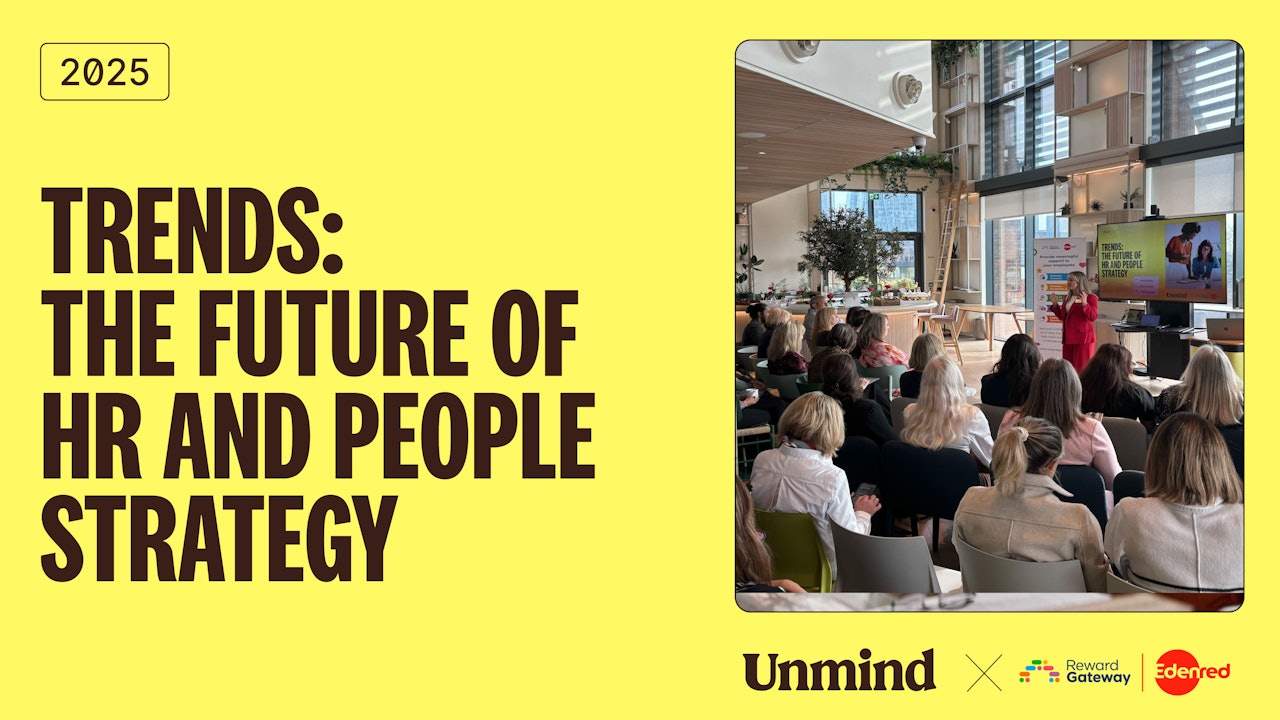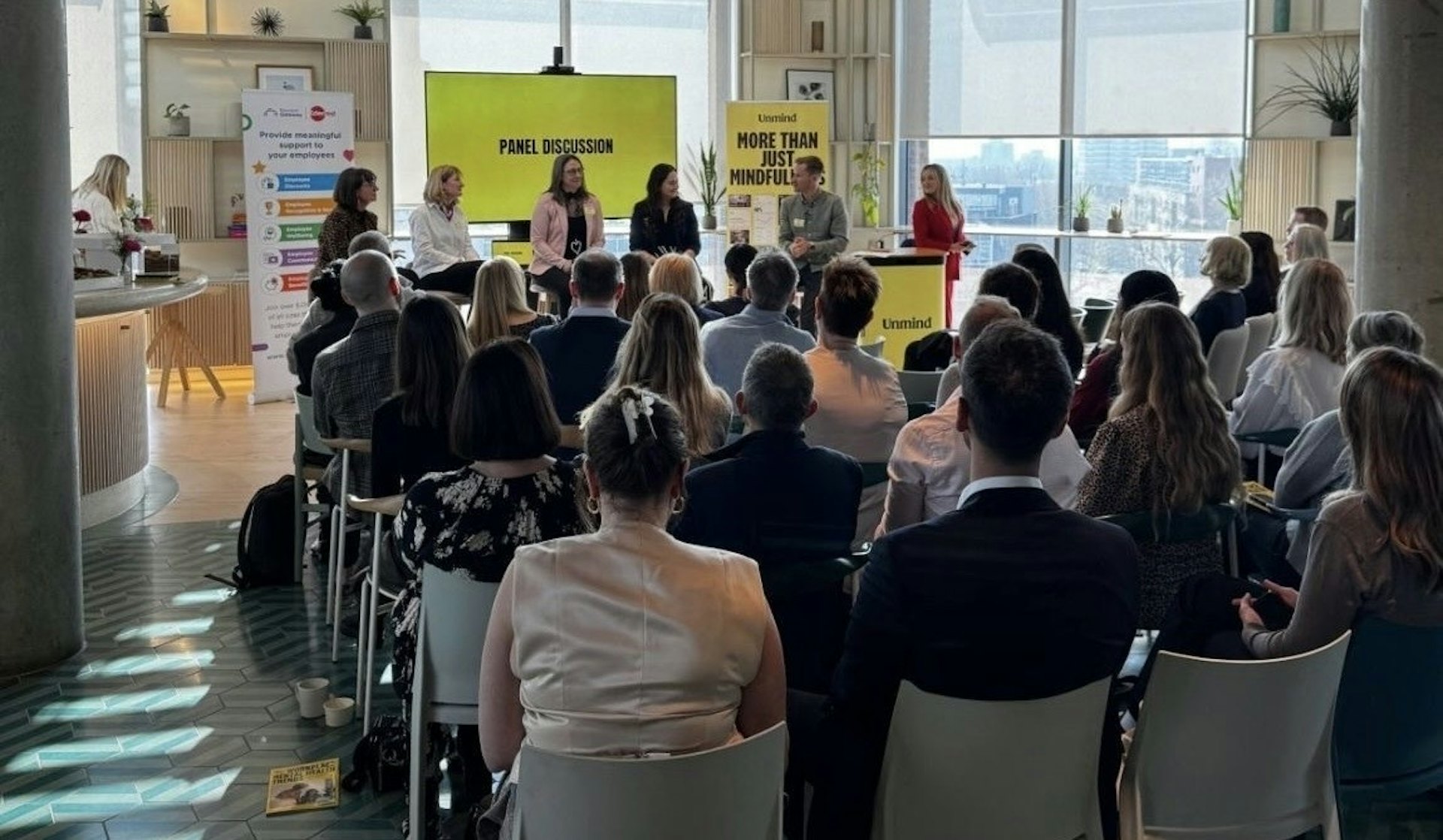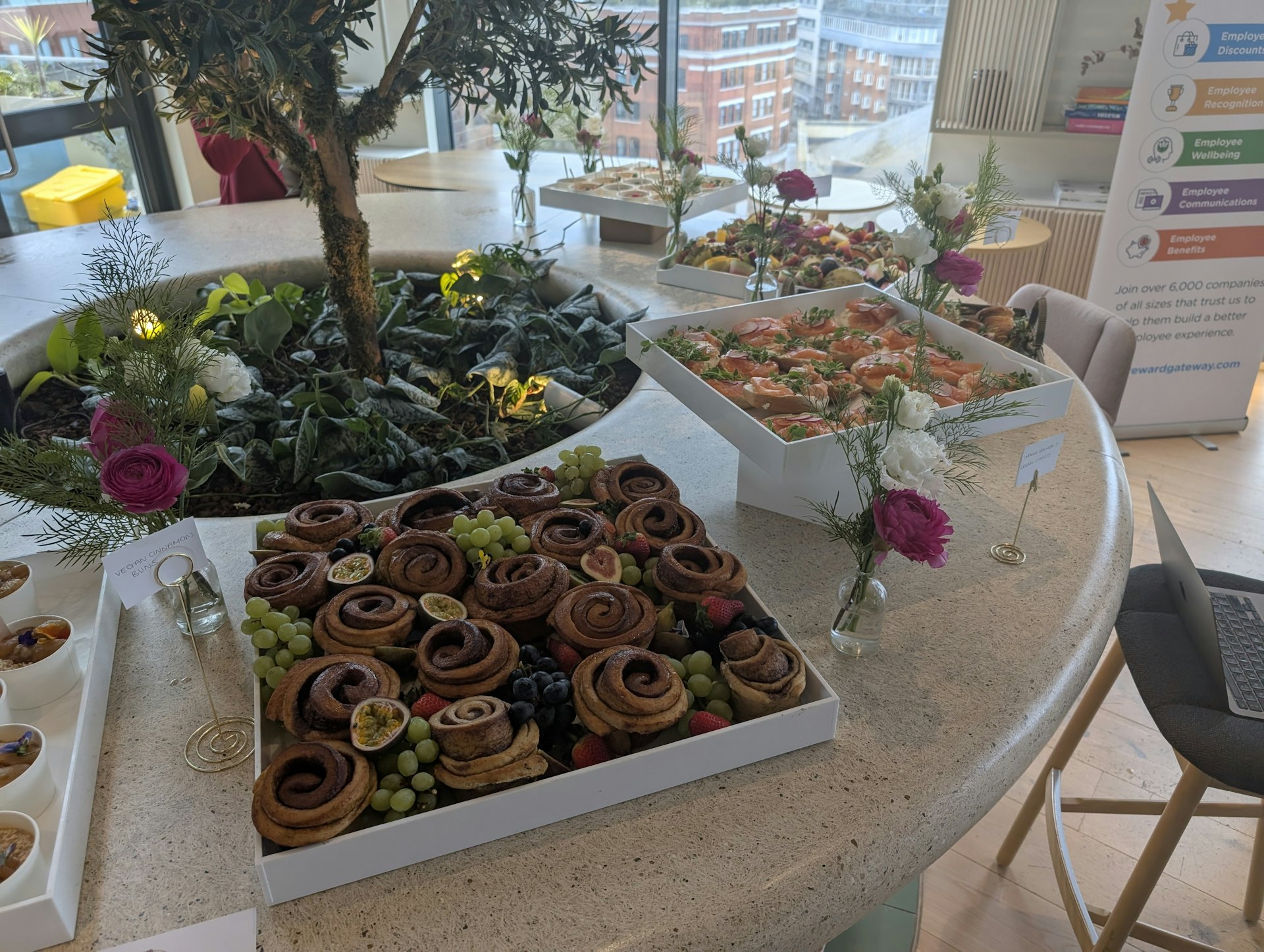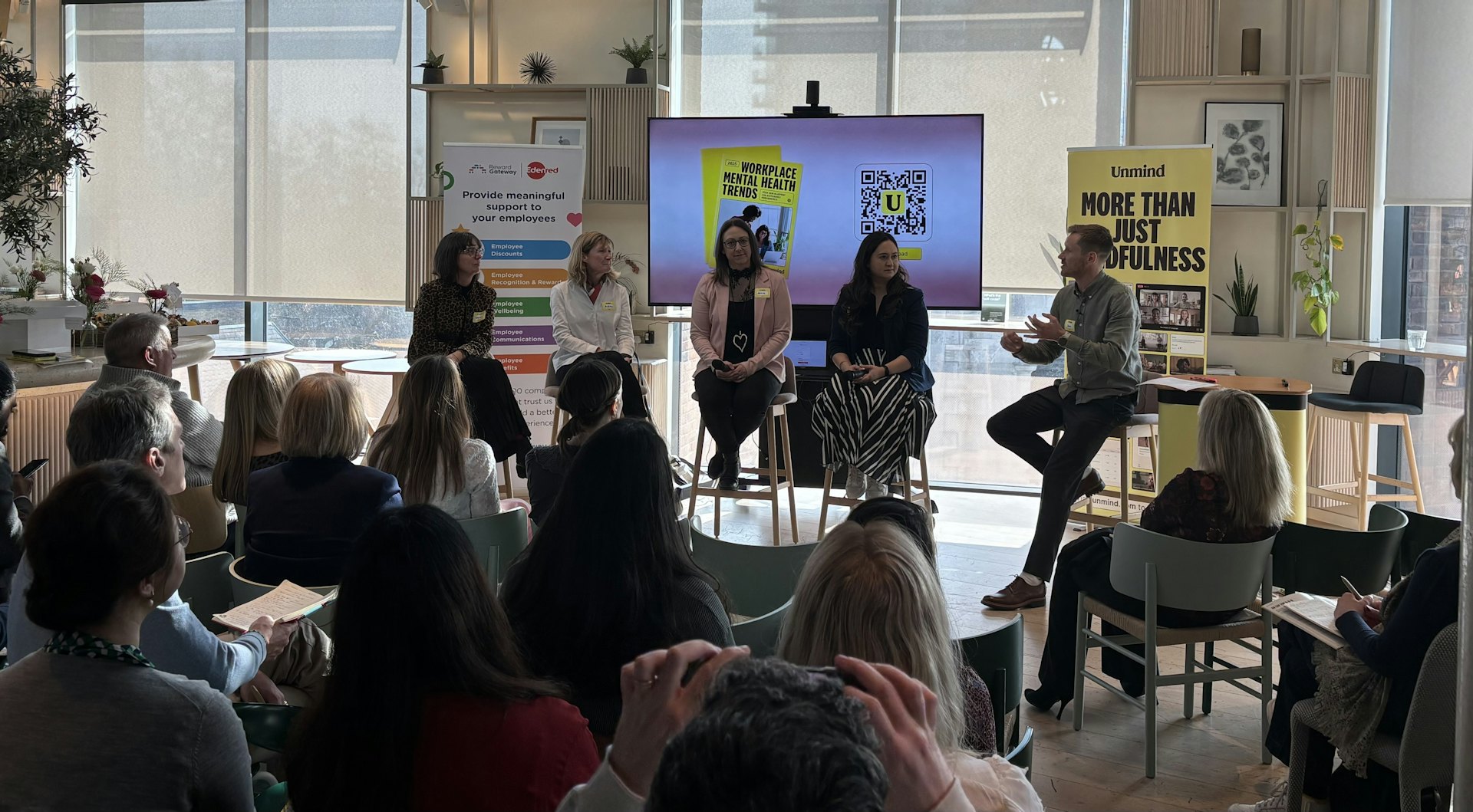8 takeaways from 2025 HR and People Trends

Oliver Matejka
27 March 2025

Content
- 1. Permacrisis calls for resilience
- 2. Wellbeing is a strategy – not a perk
- 3. AI and mental health – caution is key
- 4. Leaders need to walk the talk on wellbeing
- 5. Managers are the front line of wellbeing
- 6. AI can provide the right care at the right time
- 7. Holding the line on DEI
- 8. Diverse workforces need inclusive benefits
- Further reading
What’s the mark of an engaged audience? When the free notepads and pens are snapped up long before the chocolates on the swag table. And thanks to our incredible lineup of speakers, there was plenty to scribble about. From building resilience through ‘permacrisis’ to AI’s role in mental health, here are the eight key takeaways from the event.

1. Permacrisis calls for resilience
Call it ‘omnishambles’ or ‘permacrisis’ – we can all agree on one thing: the world feels a little less stable than it did not so long ago. Between geopolitical tension, economic strife, and tanking productivity, leaders face a critical challenge: building resilient organizations that can thrive in chaos.
Now is the time to double down on strategies that keep employees engaged, supported, and able to cope. That doesn't mean putting the onus on the individual employee to deal with situations out of their control – it means creating cultures that facilitate sustainable performance.
2. Wellbeing is a strategy – not a perk
Whether you look at Josh Bersin's Healthy Organization study or Deloitte's ROI in Mental Health Programs deep dive, the message is consistent and clear: a mentally healthy workforce is an economic imperative.
To make the business case we need to link wellbeing to key metrics – like retention, productivity, and engagement – to draw the line between employee wellbeing and performance. You can check out our playbook to help you on your way.

3. AI and mental health – caution is key
Ever since the poll highlighted caution around AI in mental health, Elvis’s Suspicious Minds has been playing on repeat in my head. Aside from it just being a great track, there's good reason: we should be suspicious. We should be skeptical. We should demand the highest standards of AI providers when it comes to our people’s mental health.
For AI to deliver meaningful, high-quality care at scale, it needs to be designed by human scientists, with proper guardrails for safety and effectiveness.
Yes, AI can improve access and scalability – but in mental health, human connection is irreplaceable. A hybrid model, combining AI with human expertise, offers the best of both worlds and maximizes impact.
4. Leaders need to walk the talk on wellbeing
Wellbeing efforts succeed when leaders model the behaviour they want to see. By sharing their own mental health journeys and building psychological safety, managers and executives can normalise conversations around mental health.
When leaders walk the talk, it creates a ripple effect across the organisation, inspiring others to prioritise their own wellbeing.
5. Managers are the front line of wellbeing
Managers are often the first point of contact for employees facing burnout, mental health issues, or complex personal challenges. Yet many aren’t equipped to provide the right support.
Training managers in emotional intelligence, active listening, and psychological safety can empower them to better support their teams and build a healthy workplace culture.

6. AI can provide the right care at the right time
An AI coach can act like a wellbeing guide in your pocket. Whether it’s a career conflict, financial worry, or relationship issue, users can access psychologist-approved advice or be directed toward professional care.
Andrea Kilgour, HR Director, Colleague Experience at EE shared how this proactive, early-intervention approach can prevent small issues from escalating – a critical step in scaling care and supporting employees before crises emerge.
7. Holding the line on DEI
Across the pond, DEI is under attack. As political and economic pressures threaten DEI budgets, HR leaders must hold the line to protect and defend vital programs.
By tying DEI initiatives to business impact – think improved innovation, employee engagement, and customer satisfaction – organisations can make an airtight case for continued investment.

8. Diverse workforces need inclusive benefits
Different employees have different needs – and the best companies recognize that a one-size-fits-all approach to wellbeing doesn’t work.
To ensure meaningful impact:
- Support non-desk workers: Easy. Make sure your resources are accessible on mobile devices.
- Tailor benefits by life stage: Early-career employees may need different support than parents or caregivers.
- Ensure accessibility: Inclusive benefits should consider diverse needs, from neurodivergence to cultural nuance.
Further reading
2025 Workplace Mental Health Trends
If you haven't already – get a free copy of our 2025 Workplace Mental Health Trends report. It's packed full of actionable strategies around these trends, with insights from thousands of leaders.
5 HR trends to look out for in 2025
The HR landscape is evolving rapidly with new tech and global trends. Explore Reward Gateway | Edenred's 2025 trends in employee experience and discover how your team can stay ahead of the curve.
About the Author

Oliver Matejka, Head of Brand and Comms
About the Author
